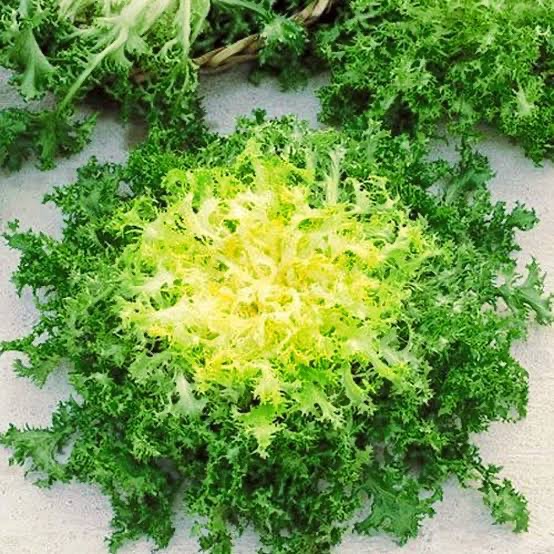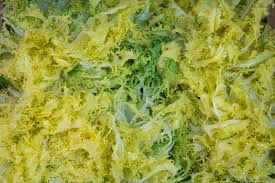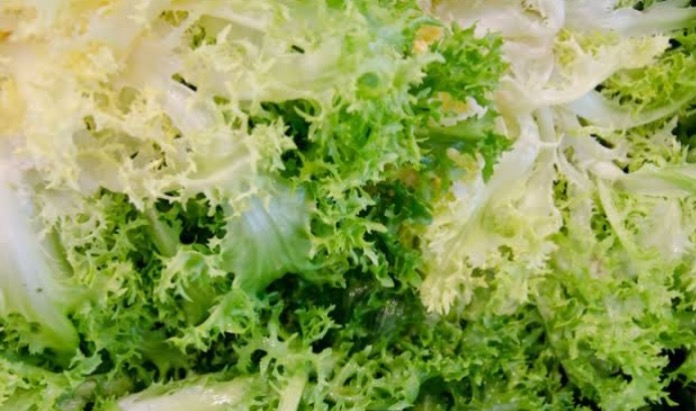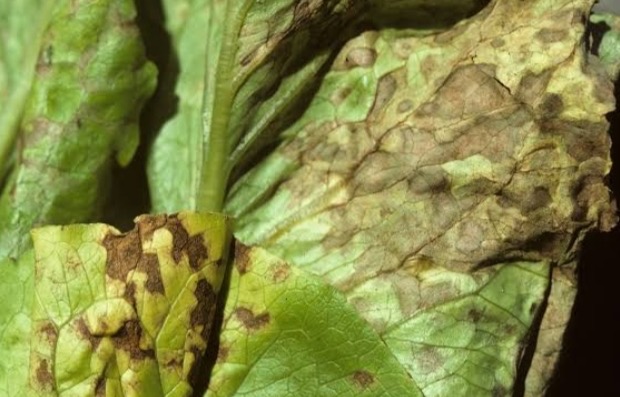Endive
Endive is an annual, 12-18 inches tall, and frost-tolerant. It prefers well-drained, fertile soil in full sun to partial shade. Keep the soil moist. Endive is both edible and has medicinal properties.
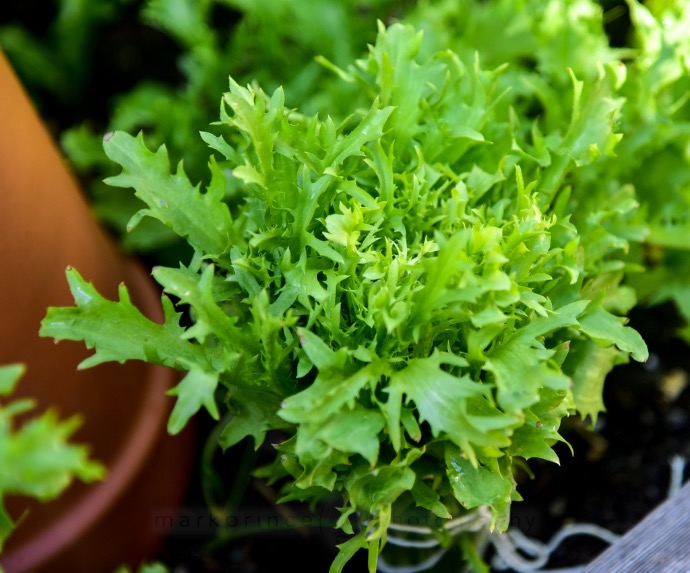
Habit
Annual
Height
0.2-0.3 m
Growth
slow
Soil
Well-drained, loamy soil
Shade
Full sun to partial shade
Moisture
Moist
Edible
Yes
Medicinal
Yes
Origin
Mediterranean
Climatic Condition
Temperate
Temperature (°)
15-20°C
Humidity (%)
50-60%
Potting media
Garden soil
Fertilizers
Organic compost
Watering
Regular watering; prefers moist soil
Plant Weight
0.2-0.4 kg
Flowering Time
Fall to Winter
Soil Ph level
6.0 - 7.5
Water Ph level
6.0 - 7.0
Soil EC
0.4 - 0.6
Yield Per Plant
Edible leaf production
NPK ratio
10:10:10
life Span
Annual
Health Benefits
High in vitamins; used in salads and cooking
Suggested Grow Media or Potting Mix ?
50% loamy soil, 30% compost, 20% sand
Suggested Fertigation/Fertilizers
Fertilize every 2-3 weeks with a balanced fertilizer.
Common Diseases and Remedies
yellowing of leaf
"Symptoms appear as wilting and a slow or rapid collapse of the plant. The roots can appear brown and water-soaked instead of white. A water-soaked lesion can often appear at the base of the stem.
control can be achieved by using sterile soil , clean pots.
HEALTH BENEFITS
· Rich in fiber, aiding digestion and gut health.
· High in vitamins A and K, promoting eye health and blood clotting.
· Contains antioxidants that support heart health.
What Is An Endive Plant?
An endive plant is a leafy green vegetable that belongs to the chicory family. It has crisp, narrow leaves with a slightly bitter flavor. Endive can be eaten raw in salads or cooked in various dishes. There are different varieties of endive, including curly endive (frisée) and Belgian endive (witloof chicory), each with its own unique characteristics and uses in culinary applications.
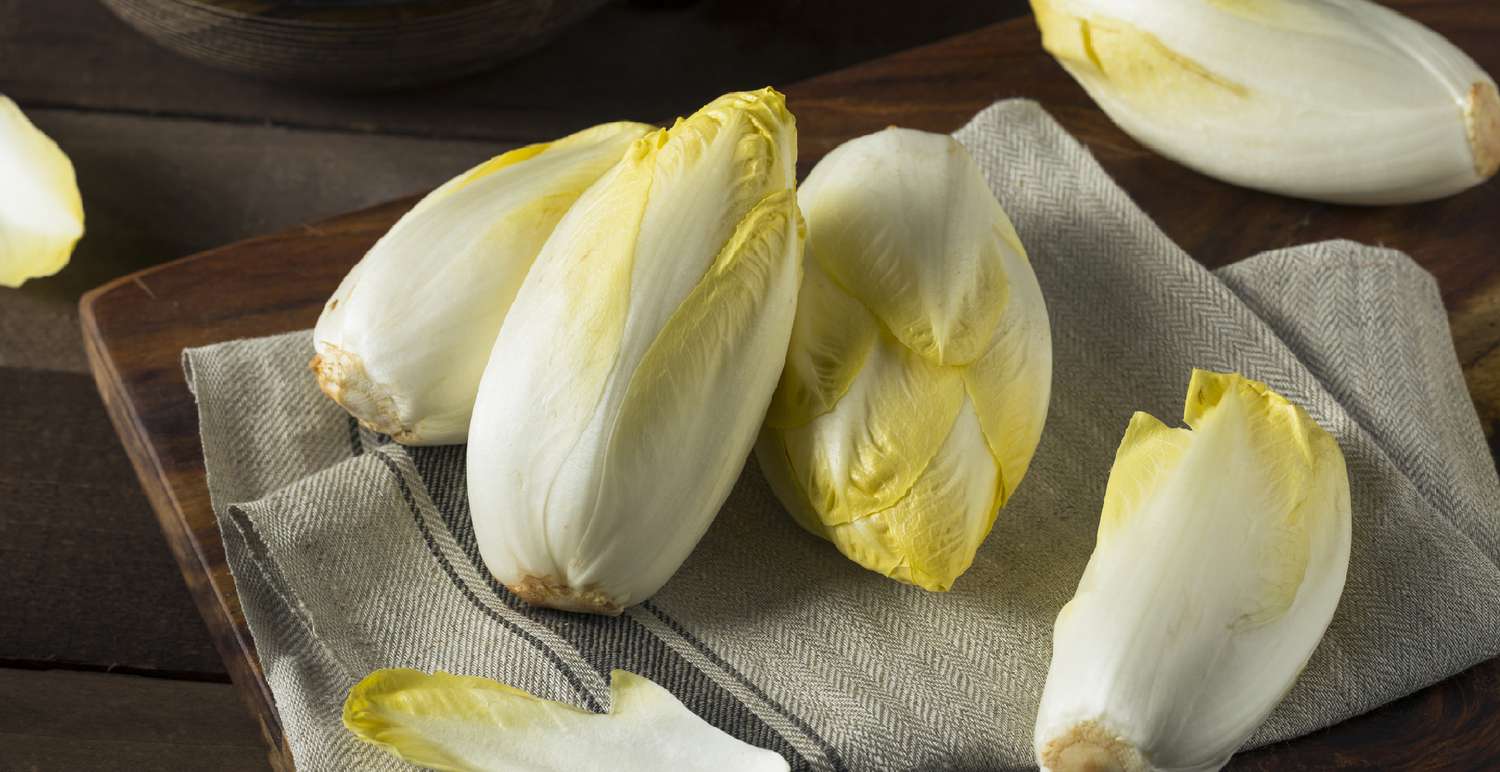
What are the different types of endive plant?
1. Curly Endive (Frisee):-
Curly endive has frilly, finely divided leaves with a slightly bitter taste. It adds texture and flavor to salads and is often used raw in culinary dishes. Its curly appearance makes it visually appealing as a garnish as well.
2. Belgian Endive (Witloof Chicory):-
Belgian endive is grown from chicory roots, which are forced to grow in darkness to produce tightly packed, pale leaves. This process results in a crisp texture and mild flavor with a hint of bitterness. Belgian endive is commonly used in salads, appetizers, and cooked dishes, and its pale color contrasts well with other ingredients.
3.Curly Endive (Frisee):-
Known for its frilly and finely divided leaves, curly endive has a slightly bitter flavor and a crisp texture. It's commonly used in salads and as a garnish.
4. Belgian Endive (Witloof Chicory):-
Belgian endive is grown from chicory roots, which are forced to grow in darkness to produce tightly packed, pale leaves. This results in a crisp texture and mild, slightly bitter flavor. Belgian endive is versatile and can be used in salads, appetizers, and cooked dishes.
5. Broad-Leaved Endive (Escarole):-
Escarole has broader, less frilly leaves compared to curly endive. It has a milder flavor with less bitterness, making it suitable for salads, soups, and cooked dishes.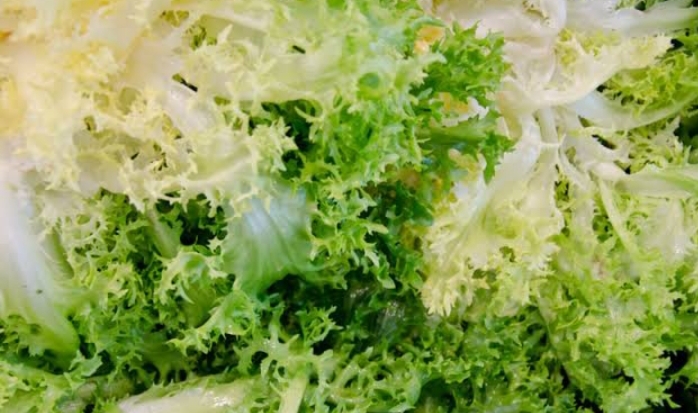
How to care for Endive plant?
1.Location:
Endive plants thrive in locations with specific environmental conditions:
2. Sunlight:
Choose a location that receives partial to full sun, especially in cooler climates. Endive plants benefit from at least 4-6 hours of sunlight per day for optimal growth and leaf development. Endive plants require adequate sunlight for healthy growth and development, Endive plants thrive in partial to full sun conditions. They need at least 4-6 hours of sunlight each day to grow vigorously and produce flavorful leaves.
3.Soil:
Endive plants thrive in well-drained soil with specific characteristics: Choose a soil that drains well to prevent waterlogging, which can lead to root rot and other issues. Endive plants prefer soil that retains moisture without becoming waterlogged, allowing for proper root development and nutrient uptake. Select soil that is rich in organic matter and nutrients. Amending the soil with compost or well-rotted manure before planting can improve fertility and provide essential nutrients for healthy growth.
4.Hydration:
Hydration is essential for the health and growth of endive plants. Endive plants require consistent moisture throughout the growing season. Keep the soil evenly moist, but not waterlogged, to ensure proper root development and nutrient uptake. Inconsistent watering can lead to stress, bolting, and bitter-tasting leaves.
5.Nourishment:
Nourishing endive plants involves providing them with essential nutrients for healthy growth and development, Use a balanced fertilizer formulated for leafy greens or vegetables to provide endive plants with the necessary nutrients. Apply fertilizer according to the manufacturer's instructions, typically every 4-6 weeks during the growing season.
6.Issues:
Bolting occurs when endive plants prematurely produce flowers and seeds, usually triggered by prolonged exposure to high temperatures or other environmental stressors. This process can lead to a decline in leaf quality and flavor, rendering the plant less desirable for consumption. Endive leaves can become excessively bitter, particularly when exposed to hot and dry conditions or when the plants experience water stress. Bitterness in endive leaves may also result from genetic factors or improper cultivation practices. Endive plants are susceptible to various pests, including aphids, caterpillars, flea beetles, and snails. These pests can damage foliage, stunt growth, and transmit diseases, leading to reduced plant vigor and yield.
What are the benefits of endive plant?
Endive plants offer several benefits: Nutritional Value: Endive is low in calories but rich in vitamins and minerals, including vitamin K, folate, vitamin A, vitamin C, and fiber. It provides essential nutrients that support overall health and well-being. Digestive Health: The fiber content in endive promotes healthy digestion by adding bulk to stool and supporting regular bowel movements. It can also help prevent constipation and improve gut health. Heart Health: Endive contains nutrients like potassium and folate, which are beneficial for heart health. Potassium helps regulate blood pressure, while folate plays a role in reducing homocysteine levels, which are associated with an increased risk of heart disease. Weight Management: With its low calorie and high fiber content, endive is a nutritious addition to weight loss or weight management diets. It helps you feel full and satisfied while providing essential nutrients, making it easier to control calorie intake.

FAQS about growing endive plant
1.How do you care for Endive plants in terms of watering, sunlight and soil requirements?
Caring for endive plants involves attention to watering, sunlight, and soil requirements:
Watering
Sunlight
Soil Requirements
2.What are the nutritional benefits of consuming endive?
Endive offers several nutritional benefits:
1. Low in Calories
2. High in Fiber
3. Vitamins and Minerals
4. Antioxidants
3. Can endive be grown in containers or does it require a garden bed?
Choose a container that is at least 8-12 inches deep and has drainage holes at the bottom to prevent waterlogging. The container should be large enough to accommodate the mature size of the endive plants and allow for proper root development. Use a well-draining potting mix specifically formulated for container gardening. You can also mix in some compost or well-rotted manure to provide nutrients to the plants.
4. What are some tips for preventing bitterness in endive leaves?
Preventing bitterness in endive leaves involves several strategies:
1. Harvest Timing
2. Growing Conditions
3. Temperature Management
5. How do you store harvested endive to maintain freshness and quality?
To store harvested endive and maintain its freshness and quality, Harvest endive leaves by cutting them off at the base of the plant with clean, sharp scissors or garden shears. Handle the leaves gently to avoid bruising or damaging them. Remove any damaged or discolored outer leaves from the harvested endive, and trim the stems if necessary. Rinse the leaves under cold water to remove any dirt or debris, then pat them dry with paper towels or a clean kitchen towel. Place the cleaned and dried endive leaves in a clean, airtight container or resealable plastic bag. Alternatively, you can wrap the leaves loosely in damp paper towels and store them in a plastic bag to retain moisture.
